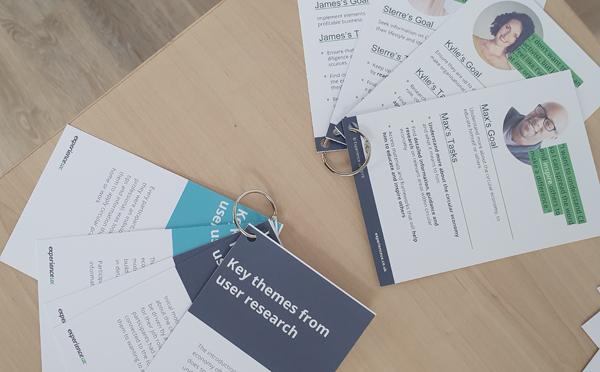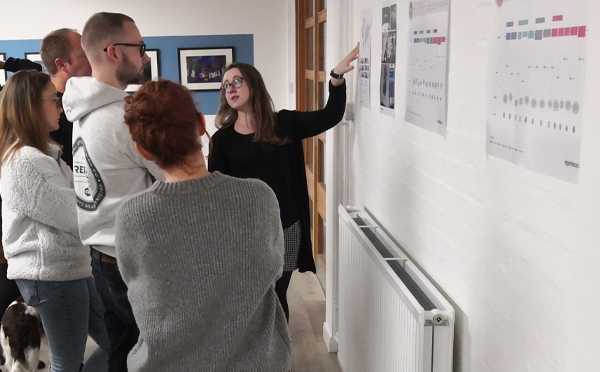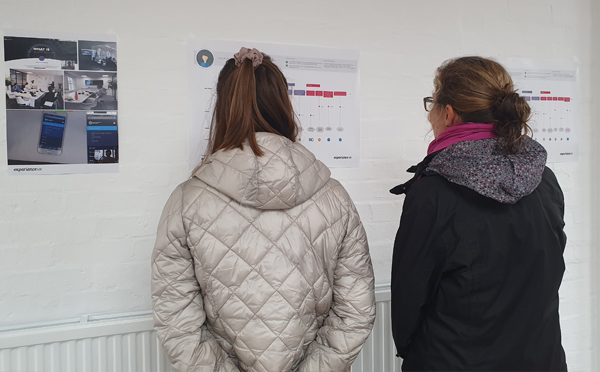Research deliveries can be an exciting opportunity to share and showcase your findings and insights. They often involve eager, albeit slightly nervous, project teams. Outputs may be shared through internal meetings, with team members in other departments; senior leadership and even CEOs. But how can you share the big picture story and findings of your user research?
Introducing the mini-museum: an immersive experience to engage stakeholders and demonstrate critical insights. Mini-museums inspire and raise awareness of the importance of improving user experience across your whole organisation or business. As opposed to a standard report and presentation, they display user research artefacts that reveal your key findings in a similar way to a conventional museum.
Mini-museums are an opportunity to showcase how your activity impacts your customers; users, and even your colleagues. They demonstrate how everyone within your organisation has responsibility for user experience.
How do you host a mini-museum?
Read on for our three steps to create your own mini-museum:
1. Tell a story
You can’t just jump straight into findings, not even your standard presentations do that! You need to remember to tell a story with your work. Like any good book, you follow a narrative arc from introducing the main characters (you and the stakeholders) to an inciting incident which is usually followed by a pretty big obstacle to overcome (this is where we share the problem, the dragon to be sleighed).
As the issue develops, we reach the climax of the story and action is taken. This part of the story is where you can talk about your actions (research, workshops etc.). As a result of your input, the issues and challenges decrease, and we reach a resolution. Share key findings, recommendations and outcomes of your research.
If you frame your work as a story, you will captivate and engage the audience whilst enabling them to comprehend, recall and tell the story to others.
2. Choose your location
Location is key. Before you start curating your items you need to consider where you will host your mini-museum as this can influence how you present your findings. You will need lots of blank wall space on which you can show your workings. Use TV screens, laptops and projectors to display digital artefacts.
Place your mini-museum in a strategic location for maximum engagement. It’s important for your museum to be accessible so consider spaces that have easy access, we want to ensure everyone has an opportunity to see the great work you have done. Hallways and communal areas with lots of foot traffic are ideal, you will be surprised by how many people stop to look.
3. Curate your artefacts
Now you have plotted out the key parts of the story and identified where you will set up, it’s time to think about what will be shown at your museum. It’s important to create easily digestible artefacts for people, not long-winded paragraphs of text to read. Like physical museums, you will have a range of artefacts you can interact with in different mediums. Think about how you can communicate your findings to hold attention and convey ‘oh wow’ moments. Video clips and montages of users are particularly impactful as they demonstrate users’ perspectives or issues they encounter.
Create artefacts that attendees can take away, user profile cards for example; sometimes this can be the best method of sharing the story and getting other stakeholders interested in what you are doing.

Everyone has the ability to curate their own mini-museum and it is a great opportunity to share the story of research outside of the standard slide decks. Invite senior leaders to browse and consider what you have found. Show off just how important and impactful user experience is and provide your colleagues with inspiration to get involved. Have fun with it, and you never know who may come seeking help for their next project.



